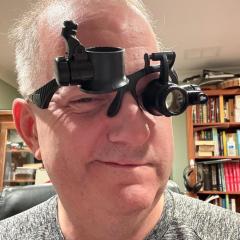Trouble installing date jumper and spring
-
Recently Browsing
- No registered users viewing this page.
-
Topics
-
Posts
-
By HectorLooi · Posted
It might be the arbor of one of the train wheels slipping. Remove the balance wheel but leave the pallet fork in place and wind until there is slippage. Obseve which wheels turn and which wheels don't. And yes, the most obvious. Is the mainspring wound in the correct direction? -
This is a positive development, especially if it holds in both horizontal positions.
-
Good question. I went back and checked, and it looked like it had been reduced, but not as much as I had hoped. So I took off the balance assembly, removed the hairspring, mounted bridge, tried to bend some more, then retested. Not much change, again. I did that five more times, each time trying to apply more force. There’s now less end shake, but I’m reluctant to push it much more. As you pointed out, these bridges are surprisingly strong, thus hard to bend, thus hard to control how much force I’m applying beyond a certain point. In the free oscillation test, I’m now up over a minute (sans shim), which is getting us back towards where we started before embarking on the exercises of oiling and bending.
-
Yeah ok, probably is the escape wheel. Yep, that part worked ok before I worked on it. Yes I did do this, but something must have slipped past my eye, train of wheels was smooth, pallet fork snapped, and balance pivoted freely. Thanks for your help everyone, hopefully this week I'll have time to sort it out.
-
The watch was a non-runner when I was asked to look at it. I'm not able to say if its components are all original. Thank you for taking the trouble to dig out the thread which I found very informative. I thought I should try to find some details about the watch that way rather than just rely on the good people here who have already helpfully answered my original question viz: are roller tables traditionally a friction fit. I'm sorry if my previous posts have caused confusion. I don't charge the Charity Shop for my time or materials so neither "lowest price" nor "profit" is relevant. I will tell the shop to what condition I have been able to return the watch & advise whether I think they could hope to get a better price online rather than selling locally in declaring that condition. Naturally I aim to do work that is 'proper' - hence my question that initiated this thread - or at least reversible & explain what I have done & why. So "fast quick repairs" doesn't exactly apply either although I won't hold on to a watch beyond the point at which I'm making improvements or have the realistic prospect of doing so, for example as a result of advice I hope to receive from WRT colleagues. I do hope this clarification is helpful. Thank you for your interest.
-





Recommended Posts